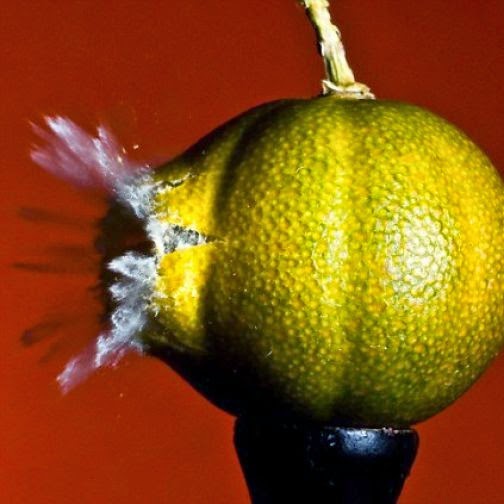
Sand has been used by the military for ages for ballistic protection. There are good reasons for this, apart from the fact that it is a material available on all theaters of operation, and cheap.
Are these reasons justified?
To answer this important question, here is a series of tests carried out with different calibers, to finish once and for all with the myths.
The results will be very useful to preppers in the defense of his home or his facilities …
While browsing the Net some time ago, I had discovered a most interesting test carried out by a veteran, which I submit to your appreciation. It allows to lift the myth about the often exaggerated projectile penetration capabilities and to see how a material as common as sand can be effective in terms of protection when it is time to wipe away enemy fire.
For this test, the author constructed boxes closed by two panels of Placoplatre, the latter containing a definite thickness of sand. It would also have been easy to use bags, but the results could have varied depending on their size, placement, orientation, etc. Moreover, the exact depth of penetration could have been problematic.

Four identical boxes arranged in a row
It was therefore constructed 4 identical boxes , then arranged on a support one behind the other; Such boxes must allow accurate measurements of the depths reached by the various gauges.
Each of them contained an exact thickness of 14 centimeters of sand.
Not knowing at the outset the thickness required to effectively stop the projectiles, the author of the test had decided to build 4 boxes, before realizing that he had taken a lot of trouble for nothing …

The 4 boxes full of sand
To begin with, the author used a 22 LR pistol.

1 ° test with the 22 LR
One could expect a low penetration, but the ball still crossed a thickness of sand about 13 cm!
Then it was the turn of the 9 mm.

9mm test
She marked the rear panel of Placo, but did not cross it.The 9 mm bullet went completely through the first box, and stopped just before the second.

Impact of the 9 mm inside the rear panel
Then the 45 ACP.

Testing the caliber 45 ACP (11.43 mm)
The 45ACP penetrated as much as the 9 mm, about 15 cm.
In the picture below, we can see the tip of the ogive barely out of the box.

The ball of 45 points the tip of his nose …
To begin with, the caliber 5.56 mm, with an AR-15 in 20 “.Then it was the turn of the long weapons …
To the general surprise, the ball completely disintegrated in the first box, and the author ‘Could only find very small pieces.
The ball did not even reach the back of the first box.

Test of the cal 5.56mm (.223)
Then the caliber 7.62 x 51 with a FAL.

NATO caliber test 7.62 x 51 mm
Like the .223, the .308 did not even reach the back of the first box …

What remained of the .308 ball
Then it was the caliber 12, with the equivalent of a Brenneke (slug) …

12 Gauge Test
The ball is not out of the first box …

What remained of the 12-gauge ball
To finish, the enormous 45-70.

Test to caliber 45.70
The large bullet with round head also stopped in the first box.

The remains of the ball of 45.70 …
The author had read that some calibers had better penetration at long distances. It therefore retreated 100 meters , and carried out the same tests.
With respect to the balls of .223 and .308, neither of them is taken out of the first box.
Only the ball of 7.62 x 51 was found, at least what remains of it …

What remains of the .308 to 100 meters …
In comparison, what remained of the 9 mm and 45 ACP bales. We could almost take them and reload them again …

Intact balls of 9 mm and 11.43 mm can be used …
Lessons to be learned:
- Sand is an excellent barrier against projectiles. None of the calibers tested penetrated more than 15 cm . Does this mean that 15 cm of sand are sufficient in terms of ballistic protection? A few centimeters more would always be preferable, but the fact is that 15 cm are enough in all the cases to stop the most common ammunition.
- The bullets of pistols penetrated deeper than the bullets of rifles. Why ? Simply because they did not have enough speed to disintegrate. The bullets of the rifles have such a speed that they have come to pieces, and this has stopped their penetration.
- The 12-caliber bullet found his master with the sand; The slug was set to pieces and stopped quickly.
- The 45.70 armored bullet penetrated a little better than the other non-armored ones, but hardly more. The sand also stopped her quickly.
Sand is therefore an excellent barrier against fire of all sizes. Those who care about protecting their homes should store one or two cubic meters in their garden, just in case. There are different ways to do this.
We can find polypropylene bags woven for a few dollars (see on the Amazon), with the appropriate dimensions. These inexpensive bags will not hold long if they are left outside, but are sufficient for the interior protection of a dwelling. For the outside, nothing is worth those in burlap; Some military surpluses offer couple dollars each.
If your budget is limited, wooden crates made from recovery pallets can be quickly fitted to the exact dimensions of your doors and openings. Build a frame made of two panels spaced about twenty centimeters, and you will only have to sink the sand inside when the time comes. You will also be able to add a little cement, to give more hold to the whole. In addition, such boxes will not be afraid of the bad weather.
Unless it is very clayey or very sandy, the earth does not provide such a good protection, much less if it is a light land coming from undergrowth. If you run out of sand, gravel can be added to the mixture to compensate with equal efficiency … Wooden crates made from recovery pallets can be quickly made to the exact dimensions of your doors and openings. Build a frame made of two panels spaced about twenty centimeters, and you will only have to sink the sand inside when the time comes. You will also be able to add a little cement, to give more hold to the whole. In addition, such boxes will not be afraid of the bad weather.
